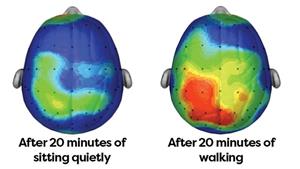For Years, Prison Life Was Isolated From Tech. Now Tech Is Beginning to Define It.
One evening in July 2020, I paced around the house, on the phone with my grandmother. The coronavirus pandemic had suspended visitation at the jail where my uncle was incarcerated, but they had just introduced video calling, and she was trying to figure out how to schedule and pay for a call. We didn't know it at the time, but my grandmother had only a few months left with my uncle. Those video calls—however imperfect, expensive, and clunky they may have been—facilitated some of the last moments they spent together. Prisons are never separate from the rest of our lives. They are a part of the social, political, and increasingly technological ecosystems we all interact with. My own experiences with technology in prisons—the video calls my grandma used, the messaging systems I rely on to keep in touch with sources, the radio I once carried around when I taught incarcerated writers—have always been defined by a duality: I feel grateful that such tech exists, because I don't know what I would do without it. And I feel angry about all the ways it continues to fail the people who depend on it. Around 1.9 million people are currently incarcerated in the United States, and an estimated 45 percent of Americans have at some point experienced the incarceration of an immediate family member. (For Black Americans, that number increases to 63 percent.) For many years, prisons have largely been tech bunkers, keeping incarcerated people isolated from the world outside. But things have started to change. In some cases, they changed because prison leaders recognized the need to connect incarcerated people to their communities. In other cases, they changed because, in relationship with private companies, prisons found a way to profit. Advertisement Related From Slate
Heather C. Jarvis
The Complex Bargaining Process of Googling From Prison
Read More The pandemic accelerated this trend. Activities like visitation and education programs were paused and in many cases replaced by video calls, e-messaging, and other virtual activities, facilitated in part by glitchy, specially made tablets distributed by private companies. As a result, things like tablets and e-messaging—which may seem trivial to those of us on the outside but can be transformational on the inside—are now popular in prisons and jails across the country. Instead of being isolated from technology, big parts of incarcerated people's lives are now being mediated through it. Advertisement Time, Online, a new package from Future Tense, attempts to document this moment. Through a series of essays that were (with one exception) written by currently and formerly incarcerated people, we'll examine how tech is changing what it means to be in prison. We'll explore what happens when streaming comes to prison and how e-messaging is affecting romantic relationships. We'll look at how incarcerated people are finding ways to jailbreak tablets and how you Google from the inside. We'll look at what it's like to wear an ankle monitor and to get access to a laptop after 17 years in prison. We'll share diaries that document how incarcerated people interact with tech hour by hour, in three different state prison systems, and how much it costs. And we'll dig into the who's who of prison tech companies and the powerful financial forces behind them. Advertisement Advertisement Advertisement Popular in Technology
- My Dog Was Fine on a Friday—and Dead by Tuesday. A Specific Concept Has Helped My Grief
- Why Floor Sitting is the New Standing Desk
- The A.I. Surveillance Companies That Say They Can Thwart Mass Shootings and Suicides
- Protecting Your Data Can Feel Like a Lost Cause. This App Makes It Easy.
To produce this package, we worked with currently and formerly incarcerated writers and artists in Florida, California, North Carolina, Ohio, Texas, New York, Michigan, and Georgia. In many cases, we edited drafts using the same clunky e-messaging systems and expensive phone calls the writers were examining in their reporting. They often typed out entire drafts on their tablets and sent them in text message–sized bits. In one state, they were charged by the minute to do so; in others, they were charged between $0.05 and $0.47 a message. Artists had to navigate unreliable mailrooms to send their art outside and could do little more than cross their fingers and hope that it would reach its destination. Messages often got held up by the prisons' screening systems, and I learned the hard way which words or phrases could cause a message to be delayed for days or weeks, if not indefinitely. While communicating with a California writer, I couldn't get out of the habit of using piece, the word I most often use for "article" or "essay," which delayed at least a dozen messages. ( Piece, I concluded, was flagged as potentially referencing a gun.) In one North Carolina prison, I was careful to avoid the words black and white, which were also sometimes flagged. The essays and art in this series paint a vivid portrait of how technology has altered and shaped the lives of incarcerated people. Tech will also define the future of prisons and of the communities connected to them. It's worth understanding how. Thanks to Empowerment Avenue and College Inside for their help in connecting to incarcerated writers and artists for this package. Future Tense is a partnership of Slate, New America, and Arizona State University that examines emerging technologies, public policy, and society.









